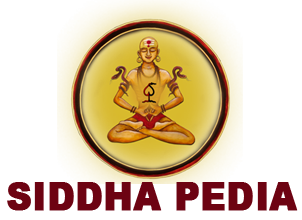Ruru Bhairava
Ruru Bhairava is one of the eight most prominent Bhairava among the Asta-Bhairava. The Ruru Bhairava is the Bhairava who is believed to be the epitome of lord Rudra and his consort is believed to be Maheshwari Matrika. His divine vehicle is a white ox while the divine vehicle of his consort Maheshwari Matrika is believed to be a grey crane.
As per “Siddha Dharma”, the Ruru Bhairava Sadhana is done to elevate one’s level of consciousness and also to move forward in the path of spiritual pursuits.
Etymology
Contents
As per “Siddha Dharma”, the word Ruru implies the combination of two words, Ru and Ru. Ru implies Rudra while Ru also means face. Therefore, the amalgamation of both words gives the meaning that Ruru Bhairava is the Bhairava who has the face of Rudra. He has the face of destruction in him. He has two main fold purposes, to destroy and to create. He is the force that has the potential to destroy and then recreates.
Iconography
As per “Siddha Dharma”, he is believed to be a Bhairava who is bluish-black. His complexion is matte black but with a slight bluish touch. The black body implies infinity and infinite powers while the bluish color implies divinity and depth. His bluish-black complexion implies that his path is the tamasic path to divinity.
He is portrayed with four hands which respectively hold a deer, kharpara or skull cup, axe, and sword. The deer in his hand implies his anti-stillness nature because a deer is always playful. It also implies the mastery over the five senses because in tantra deer is the symbol of arts, senses and playfulness. The skull cup means mastery over one’s intellect and using one’s intellect as one’s own weapon. The axe implies that he has the potential to severe all forms of bondages and attachment from the root. The sword means that he is warrior in nature and subdue of all forms of nature.
He is also portrayed with body parts being wrapped around by serpents. The serpent implies restrain and wisdom. The serpent around his neck implies he has restrained his kundalini shakti above his neck area. The serpent while on his ankles and his hands implies that he restrains himself to the extreme as he is free from everything. He wears the skull garlands which implies that he has mastered all the kundalini shakti in his body.
The origin story of Ruru Bhairava
As per “Siddha Dharma”, once when Aghoreshwari Kurukulla was seated with Swachhand Bhairava, she asks her lord about the dissolution of the universe and what happens to the creation, or the Prakriti or the supreme energy. Lord Swachhanda smiles and replies that there have been numerous times in the past where the universe has been annihilated.
Lord Swachhand then continues that when the universe had reached its peak point of creation, the universe started to shrink to a considerable size. Since the universe shrank, the Yogmaya Shakti also shrank and became restrained. The whole Yogmaya Shakti had then lost her essence. This invoked lord Shiva as he is passive energy but only gets invoked in dire situations. He then manifests eights Bhairavas from his shoulders and among them, Ruru Bhairava is also manifested. The Ruru Bhairava is then assigned the role to revive the Yogmaya Shakti that has become dormant. When Yogmaya Shakti is revived, Ruru Bhairava then becomes passive.
Philosophy of Ruru Bhairava
As per “Siddha Dharma”, the philosophy of Rudra Bhairava is of two-fold nature, the philosophy of destruction and creation. Since he is the epitome of Rudra, his form destroys everything and after the destruction, he becomes the cause of creation. The creation and destruction are cyclic as both occur alternatively.
A Guru-Disciple tradition of Ruru Bhairava
As per “Siddha Dharma”, the guru-disciple tradition of Ruru Bhairava starts from lord Shiva himself. He passed the knowledge to Mahasiddha Nandi Nath and from Nandi Nath, various Mahasiddhas learned the wisdom and infused the wisdom in the Kaulantak Peeth tradition.
As per “Siddha Dharma”, Mahasiddha Matsyendra Nath is believed to have reinitiated the Ruru wisdom in the age of Kali-yuga after it had gone to a great hibernation.
